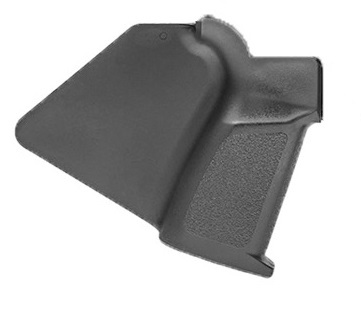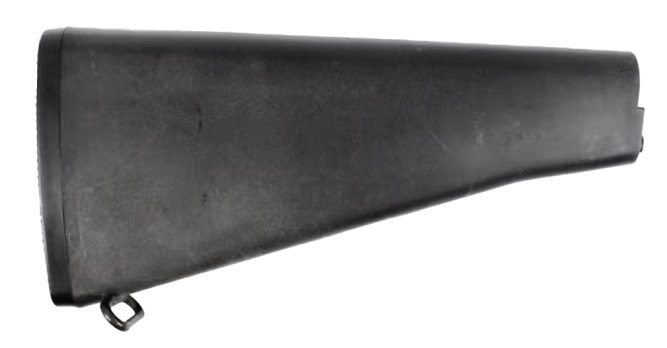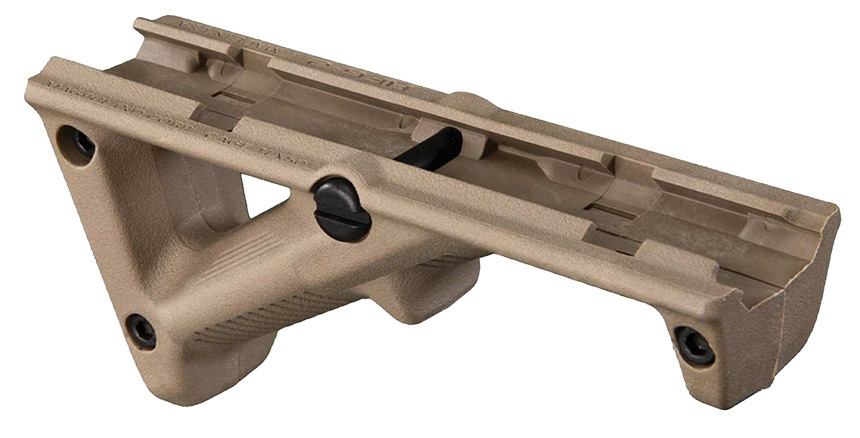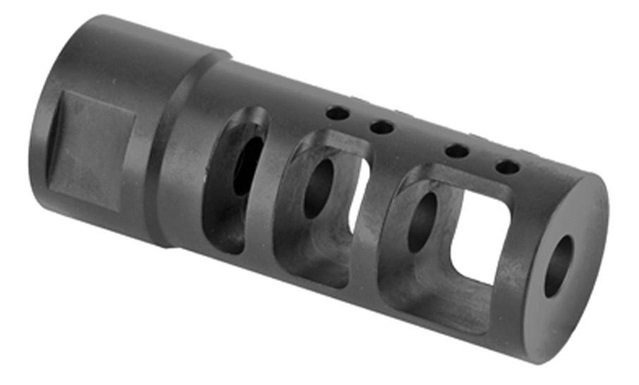How to Make Your AR-15 Legal in California
Posted by 80-Lower.com on Jun 2nd 2025
California has some of the strictest gun laws in the country, especially when it comes to the AR-15. The state's legislature has placed many restrictions on how, exactly, an AR-15 can be legally configured. There are numerous parts you can't legally install.
But with the right ones, you can still enjoy a functional AR that's nearly identical to an unrestricted rifle. Here's how to build a California-legal AR in 2025.
California Law & The AR-15
Before getting into how to build a legal AR in California, it's important to understand what state law says. Then when new parts come out, you'll better understand how to keep your AR legal.
California restricts the AR-15 through its Assault Weapons Laws. Those laws are defined by the California Department of Justice, here.
California places what it calls "assault weapons" into three categories:
- Category one: Firearms banned by "type, series, and model." These are specific firearms by name, like the Steyer AUG.
- Category two: Firearms banned because they're "variations of the AK or AR-15, with only minor differences." This does not ban ownership of AK- or AR-type firearms.
- Category three: Firearms banned based on their features and parts. This is the category that concerns you, the AR-15 owner-builder.
How California Defines "Assault Weapon"
Your AR-15 may or may not fall under the third category of firearms that are banned in California based on how its configured. In other words, whether it has specific parts or features installed determines if it is legal.
These regulations are found in California Senate Bill 23 (SB 23), which passed in 1999 and went into effect January 1, 2000.
Under SB 23 '99, an assault weapon (which is illegal to own in California) is defined as any of the following:
- A semiautomatic, centerfire rifle that has the capacity to accept a detachable magazine and any one of the following:
- A pistol grip that protrudes conspicuously beneath the action of the weapon.
- A thumbhole stock.
- A folding or telescoping stock.
- A grenade launcher or flare launcher.
- A flash suppressor.
- A foreward pistol grip.
2. A semiautomatic, centerfire rifle that has a fixed magazine with the capacity to accept more than 10 rounds.
3. A semiautomatic, centerfire rifle that has an overall length of less than 30 inches.
4. A semiautomatic pistol that has the capacity of accept a detachable magazine and any one of the following:
- A threaded barrel capable of accepting a flash suppressor, forward handgrip, or silencer.
- A second hand grip.
- A shroud that is attached to, or partially or complete encircles, the barrel that allows the bearer to fire the weapon without burning his or her hand, except a slide that encloses the barrel.
- The capacity to accept a detachable magazine at some location outside the pistol grip.
5. A semiautomatic pistol with a fixed magazine that has the capacity to accept more than 10 rounds.
6. A semiautomatic shotgun that has both of the following:
- A folding or telescoping stock.
- A pistol grip that protrduces conpicuously beneath the action of the weapon, thumbhole stock, or vertical handgrip.
7. A semiautomatic shotgun that has the ability to accept a detachable magazine.
8. Any shotgun with a revolving cylinder.
There are some key definitions and exceptions to know, too:
- "Assault weapon" does not include any antique firearm.
- "Antique firearm" means any firearm manufactured prior to January 1, 1899.
- "Magazine" shall mean any ammunition feeding device.
- "Capacity to accept more than 10 rounds" shall mean capable of accommodating more than 10 rounds, but shall not be construed to include a feeding device that has been permanently altered so that it cannot accommodated more than 10 rounds.
How to Avoid Making Your AR-15 an "Assault Weapon"
Given the various definitions above, which California uses to classify "assault weapons" under SB 23, you have two options to choose when building a California-legal AR-15:
- Build an AR with a permanently attached, 10-round magazine. This is called a "fixed-mag" rifle.
- Build an AR with a detachable magazine and no banned parts. This is called a "featureless" rifle.
Featureless vs. Fixed Mag: Which is Better?
The answer is: Neither. If you browse Reddit or California gun forums, you'll fine AR-15 owners are pretty evenly split on which configuration is preferred.
The general consensus is that fixed-mag ARs are best for the range, while featureless rifles are best for self-defense.
The fixed-mag AR-15 is better for target shooting and range days where quick reloads are unnecessary. This configuration also allows shooters to install all the accessories they want to enjoy better performance and accuracy, like a muzzle brake to reduce muzzle rise and felt recoil.
Featureless ARs allow shooters to retain the ability to perform quick reloads with a standard magazine catch and release. Many California AR owners view this as necessary in a self-defense scenario since, even with a featureless AR, magazine capacity is limited to 10 rounds. In March, 2025, an appeals court determined that California's high-capacity magazine ban (which includes 30-round AR-15 magazines) was constitutional.
How to Build a Featureless AR-15

As a reminder, the following parts must be avoided to build a featureless AR-15 that's legal in California:
- Pistol grip
- Thumbhole stock
- Folding or telescoping stock
- Grenade or flare launcher
- Foreward pistol grip
- Flash suppressor
California-Legal AR Grips

When building a featureless, california-legal AR-15, the biggest obstacle to overcome is replacing the pistol grip with a legal grip. The AR-15's grip is a core feature of the weapo. But, thankfully, an easy alternative exists: The fin grip or featureless grip.
Either of these grips avoids meeting the language California uses to define pistol grips. That definition is found in Chapter 39 (Assault Weapons & Large Capacity Magazines Regulations), Section 5469 (d):
"'pistol grip that protrudes conspicuously beneath the action of the weapon' means a grip that allows for a pistol style grasp in which the web of the trigger hand (between the thumb and index finger) can be placed below the top of the exposed portion of the trigger while firing."
Use a Fixed Stock

This one's easy: You'll need a fixed stock for your AR-15. M16 lovers rejoice. The classic, A2-style stock is a popular choice for making a featureless, CA-legal rifle.
Ditch The Under-Barrel Launcher

Although you can legally own a 37mm or 40mm launcher in some states, you simply can't have one in California. That unfortunately means no M203.
Angled Foregrips Only

The state's Assault Weapons Laws only ban forward pistol grips, including any vertical grips. This doesn't mean you can't have any grip on your handguard, though. You can install an angled grip, like the Magpul AFG-2.
California-Legal Muzzle Devices

Although you can't legally install something like the typical A2-style flash hider, you can install a muzzle brake (like the Spike's Tactical R2) or compensator on your featureless AR. So long as your muzzle device is explicitly designed to reduce felt recoil and not reduce muzzle flash, it's legaly under California's Assault Weapons Laws.
How to Build a Fixed-Mag AR-15
Under California's Assault Weapons Laws, a fixed magazine means, "an ammunition feeding device contained in, or permanently attached to, a firearm in such a manner that the device cannot be removed without disassembly of the firearm action."
In other words, your AR's magazine can't be capable of being removed by using the standard magazine catch and button assembly installed on the lower receiver.
Legally, the magazine must not be capable of being removed from the lower without separating the upper and lower receivers by pulling on the rear takedown pin.
The most popular components builders choose to make their AR's used fixed magazines involves the AR MagLock, and the KingPin rear takedown pin.
The AR MagLock prevents standard magazines from being removed unless the upper and lower receivers are separated, while the KingPin allows the rear takedown pin to separate a fraction of an inch with a simple button press. The KingPin also features a spring-loaded mechanism that relocks the upper and lower receivers when they're pushed back together.
A second, easier configuration involves installing a modified 10-round magazine that cannot be removed via the standard button release. These magazines don't require installing a new takedown pin, nor a different magazine release or catch.
DISCLAIMER: If you are new to the world of DIY gun building, you likely have a lot of questions and rightfully so. It’s an area that has a lot of questions that, without the correct answers, could have some serious implications. At GunBuilders.com, we are by no means providing this content on our website to serve as legal advice or legal counsel. We encourage each and every builder to perform their own research around their respective State laws as well as educating themselves on the Federal laws. When performing your own research, please be sure that you are getting your information from a reliable source.

